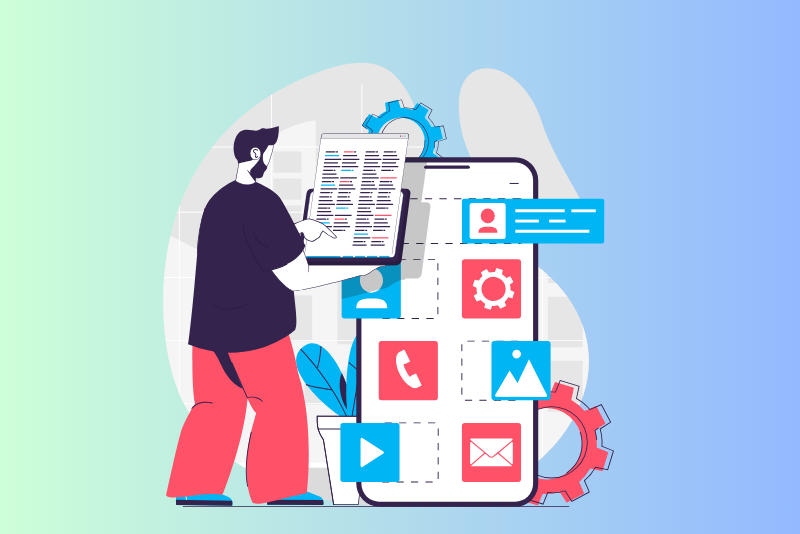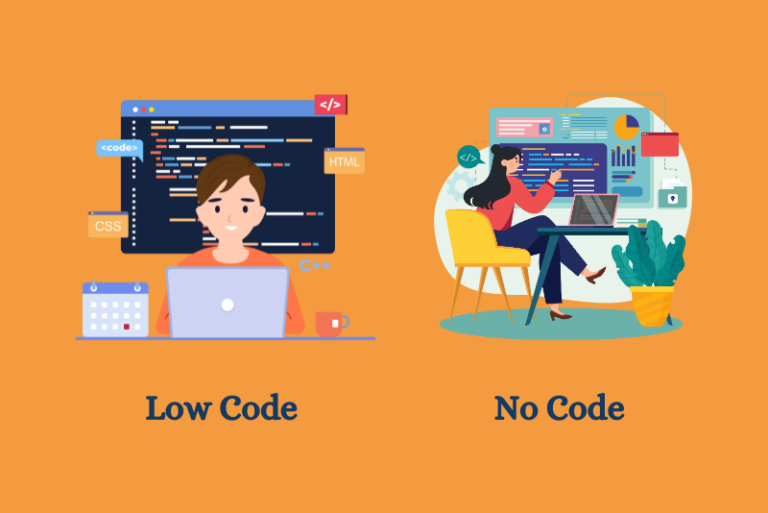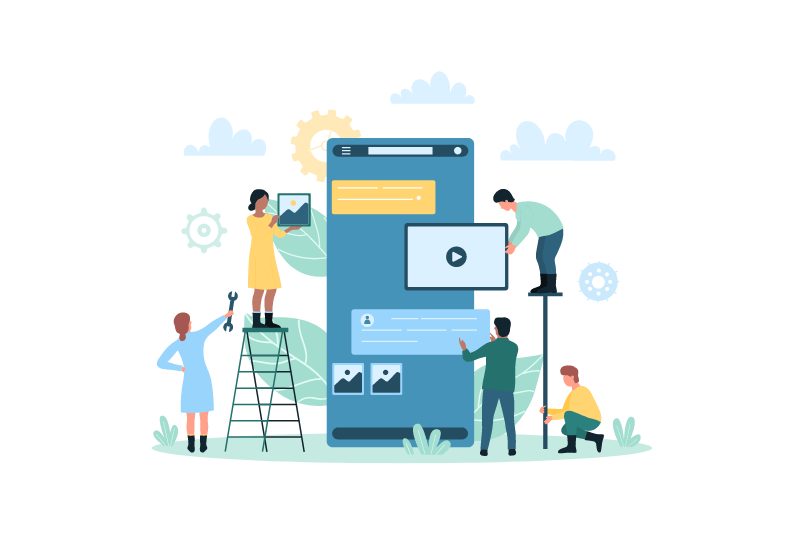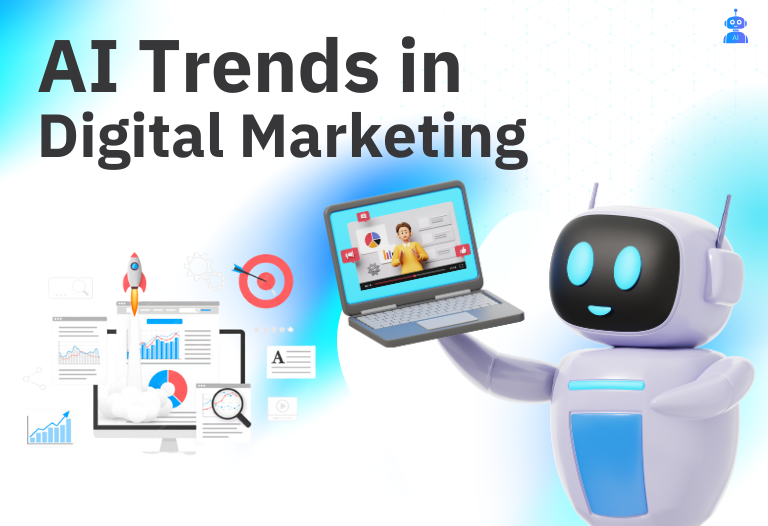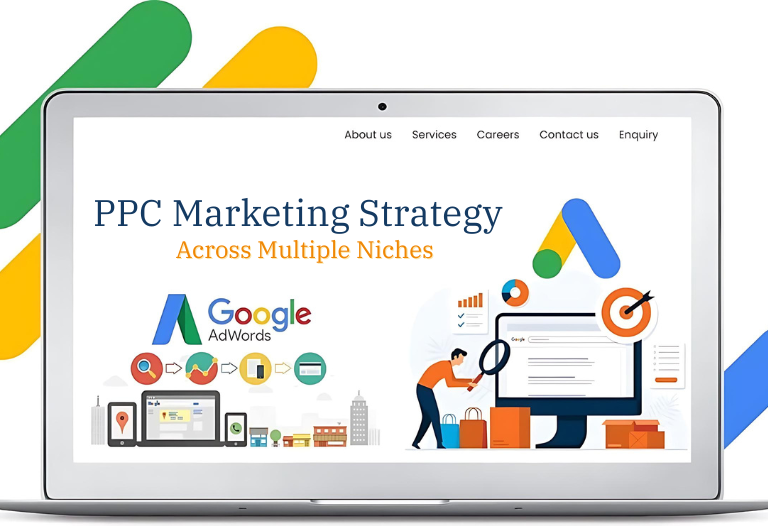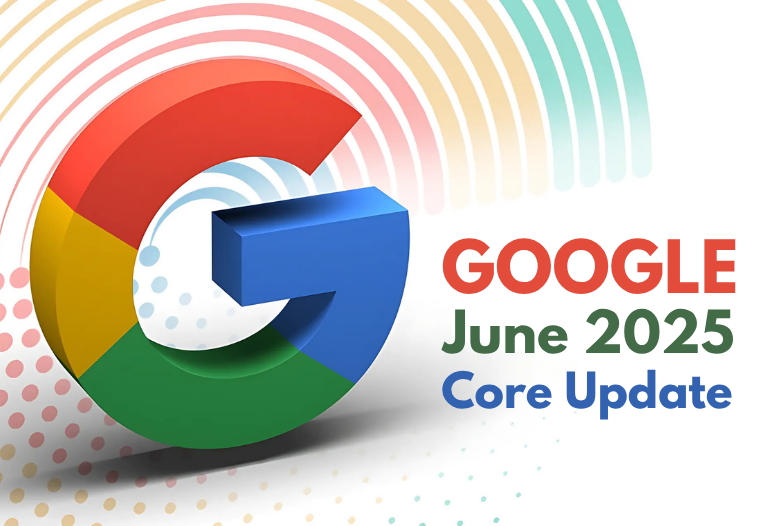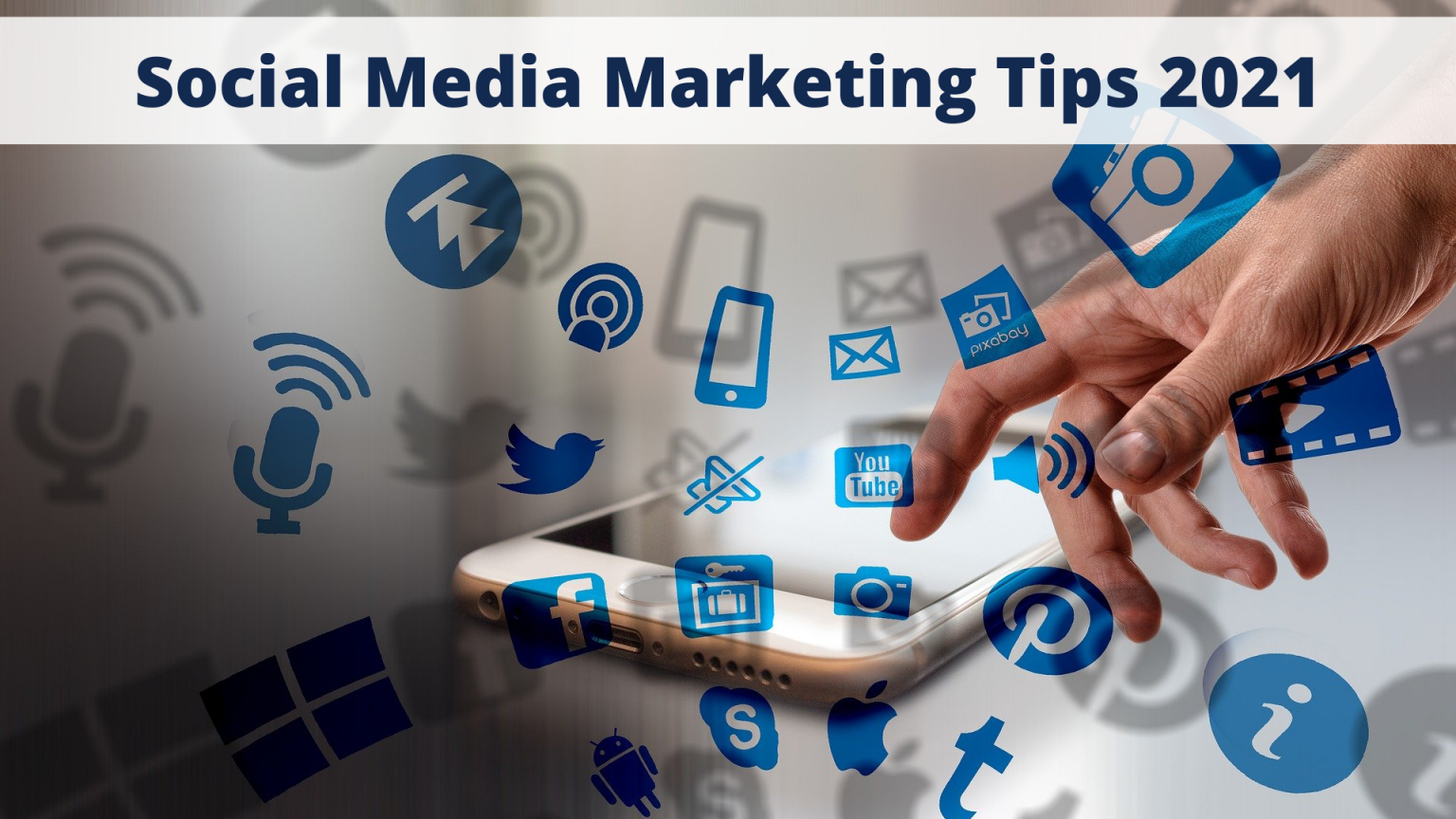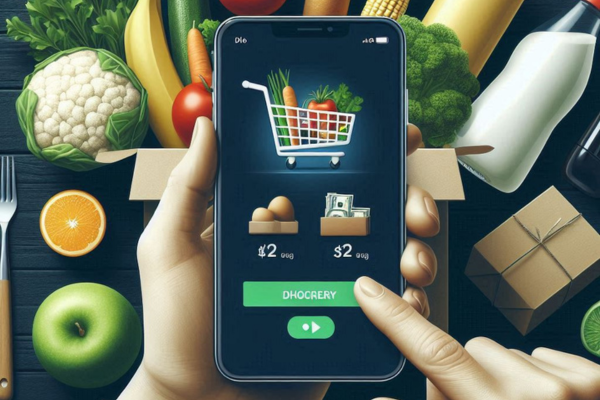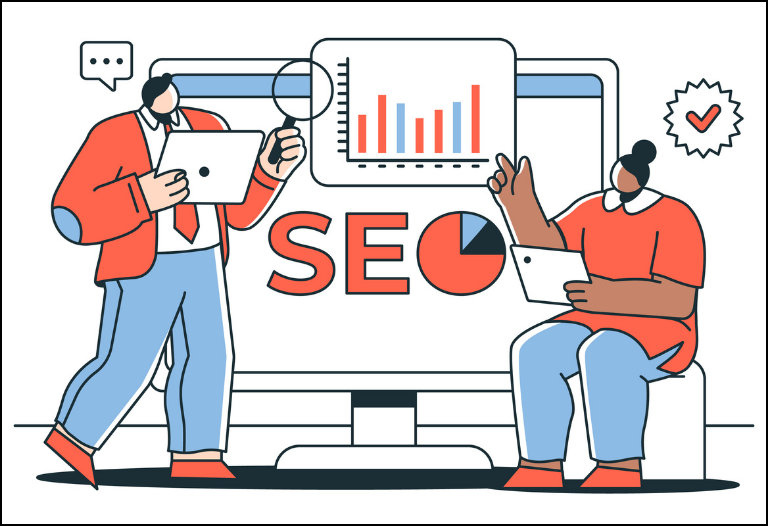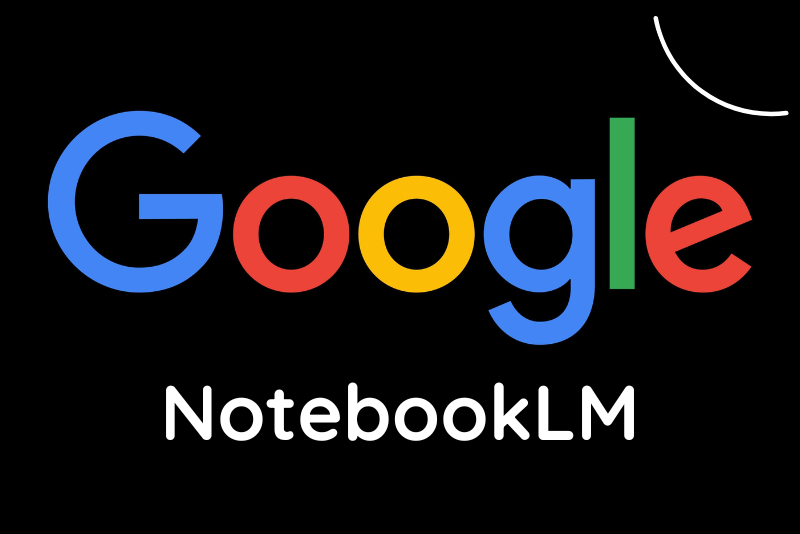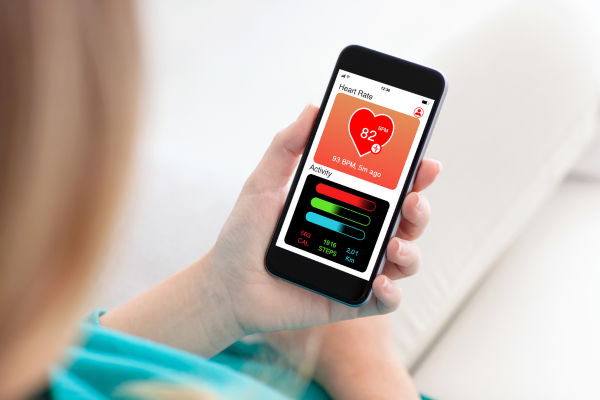
Healthcare app development refers to creating a mobile application for users’ benefit, such as managing their insurance claims, hospital visits, fitness objectives, or medical issues. Prescription and appointment scheduling, lab results reviews, telemedicine, and other services are included in this.
The need for mHealth applications will only rise in tandem with technological advancements.
The use of mobile phones and other technologies in the medical field is known as “mHealth” (mobile health). Mobile applications provide information to patients and healthcare providers, concerning treatment support, clinical trial assistance, preventative healthcare measures, and progress monitoring.
By 2024, it is projected that the worldwide market for mobile app development for healthcare will have grown to a valuation of more than $59 billion.
Patients appreciate healthcare applications as consumers. According to 71% of patients, it would be better if their physicians used a mobile app for healthcare.
The same is true on the provider end. Medical applications are now widely used; 50% of medical school students use their favorite app every day, and 70% of students reported using at least one medical app regularly.
We put up this article addressing the top 9 things you should know before signing the dotted line to build your first mobile app, for any healthcare executive out there who is interested in doing so.
1.Establish a strong digital plan
-
Make it clear what kind of mobile healthcare app you are developing. And why.
You must first specify the precise objective of your first health app before moving on. Try not to take on too much. Additionally, consider the target audience for the app.
This is what distinguishes the best mobile applications from the others. A user creates an association in their mind between a mobile application and a certain use case. Make sure you respond to this question before developing any app. The perfect user of our app will accomplish one item regularly.
These are some excellent mobile applications for healthcare that serve a single purpose and do it effectively.
-
Applications for managing health information
The purpose of these apps is to facilitate the sharing of medical data between patients and physicians. They can also be used to schedule and oversee visits with your doctor.
-
The correct building of mobile apps for patient monitoring
Over the past few years, telemedicine services related to patient monitoring have increased significantly. Numerous healthcare software and manufacturing companies have hurried to join this congested market and add value for hundreds of millions of patients worldwide. Prominent patient monitoring applications further monitor the user’s whereabouts to ensure prompt assistance in case of need.
-
Apps for medical resource information developed with the needs of users in mind
In a survey, teachers, residents, and students at medical schools agreed that utilizing a mobile device to swiftly access instructional resources while on the move improved their performance by 75%, 95%, and 55%, respectively.
Examples include medical calculators that determine the optimal frequency of medication administration and drug reference applications that educate patients on the advantages and disadvantages of specific treatments.
-
Make sure you understand exactly what issue your new healthcare software is attempting to resolve.
Make sure the issue your new healthcare app solves is one that people genuinely desire or need to be solved before developing it for your company.
For instance, just 11% of health institutions provide users with proprietary applications that function with at least one of the three features that consumers most want: electronic medication refill requests; access to medical information; and the ability to schedule, modify, and cancel appointments.
-
Make diligent research and surpass the competition
Once you are aware of the issue that your new healthcare app will address, consider the competitors t in the market and their complementary or equivalent offerings. The presence of competition indicates a demand for the product. Competition might benefit your app or hurt it.
-
Clearly state your strategy for app monetization upfront
One thing unites the top-grossing games in the App or Play Store: they can all be downloaded for free. Rather, they monetize through in-app purchases and advertising.
Subscriptions are the most popular technique of monetization, especially in the healthcare industry. This is the best course of action if you have developed a strong health app that gathers data and offers advice, suggestions, and methods related to health.
-
Establish your app’s omnichannel approach
Which device—a tablet or a mobile phone—will perform better for your healthcare app? Will it be designed for iOS, Android, or both? Take into consideration the environment you are creating. Are you going to have a website AND an app? Is it possible to use Siri or Google Assistant to voice activate it? Would using a camera allow for face-to-face interactions to be beneficial?
-
Create and evaluate an MVP healthcare mobile app
The initial impulse one has while developing a mobile app is to create the greatest one possible. But things should not be like that. It can take several years to develop the ideal healthcare mobile application. Try not to complete the app’s development in a single day. Make a Minimum Viable Product (MVP) and iterate on it instead. This is due to several factors.
2.Develop an outcome-focused Healthcare application
Applications for mobile healthcare should be created to save physicians and other healthcare providers time and money while improving the precision of diagnosis and treatment recommendations. Above all, patient applications need to offer accurate and pertinent data.
3.Follow the rules about healthcare
Among the US industries with the highest levels of regulation is healthcare. If your software violates any laws, it might be taken down from the app store, shut down permanently, penalized by the FDA, or even face legal action from users.
While Apple or Android examine new applications for technical issues, the app’s medicinal value is not evaluated during this process. Thus, health tech businesses need to make sure their app conforms with all current standards and do their due diligence.
4.Validate the concept with patients and medical experts
Your app should be tested by focus groups and surveys with actual users once it satisfies target market requirements, laws, and best practices. Professionals or patients liking your app is not crucial right now. Instead, you must find out whether they will utilize it.
Your app will launch more quickly the more market research you do. Companies that do not conduct adequate market research attempt to fit their product into the market by spending excessive time and resources on it.
5.Deliver an exceptional online experience
Although today’s consumers demand an excellent user experience, the healthcare sector has historically lacked the resources to implement a successful digital strategy. Hiring a top-notch digital strategy and mobile app development company is the first step towards creating a fantastic health app. Avoid attempting to make it yourself.
To find the ideal healthcare mobile app development service, keep in mind the following advice.
-
Locate a company with experience in the medical field
The top development companies should be able to advise you based on their prior application expertise, from the app’s conception to its launch and beyond. The greatest companies have a wealth of collective knowledge that extends well beyond a particular product, so they already know what works. The user experience is the most important factor to great developers. There are a ton of healthcare apps in the app store; yours needs to stand out.
-
Think carefully if you can collaborate with the agency in the long run
The process of developing an app is ongoing. Periodically, it will need to be updated and modified to incorporate new features and consider user comments. You must locate a mate with whom you may establish a connection. You need them to remain active once the app is hosted and goes live.
-
Do not let pricing influence you
Lastly, do not pick a developer just because they are giving you a cheaper quote than your rivals. Not the cheapest product is what you want to develop. You do not want to have to pay someone to correct a mistake made by another developer.
6.Build applications that are compatible with the healthcare ecosystem
-
Relationships With EMR
Electronic medical record systems (EMR) and electronic health records (EHR) must be connected to all mHealth apps. The paper charts kept in a clinician’s office are digitalized into electronic medical records. All the patients’ medical and treatment histories are kept in one electronic medical record (EMR).
-
How can EHRs and health applications be integrated?
Project managers, business analysts, hospital IT teams, EHR software consultants, patients, and healthcare mobile app development and testing teams were interviewed for the study. These were the outcomes:
- The daily routine and workflow of the patient or professional must be considered during integration.
- Mobile-integrated treatments (MITs) should be supported by design within a single EHR. Where app users and EHR users could enter the same data into separate areas, developers must remove redundancies across the systems.
- Security needs to be ensured in different contexts, but it should not prevent them from communicating with one another.
- The integration’s two components, particularly the patient-facing applications, must function natively on as many mobile devices as feasible.
- Apps need to function even in situations where network access is weak or inconsistent.
- Help must be accessible from support staff who are knowledgeable about the technology.
- There must be similar standards followed by the two systems, including using the same measurement units.
- The integration team must be prepared for a more involved procedure than they had first thought.
7.Use next-generation healthcare technology to stay ahead of the curve
You must make sure that your healthcare mobile app can eventually integrate new tech stocks into it as part of the development process. Here are a few illustrations.
-
Use of Artificial Intelligence (AI) in healthcare
AI has a big impact on healthcare. Neural networks are a type of AI that can be beneficial to the healthcare sector. Instead of being specifically designed, neural networks are learned and self-learning systems. They are already being utilized in the identification of cancer cells within the body and the drug discovery process.
Thus, neural networks may be used in healthcare applications in the future to let users self-diagnose and suggest therapies without a physician’s assistance.
-
Blockchain technology in the healthcare sector
The most well-known application of blockchain technology is in cryptocurrencies. The blockchain is an incorruptible digital ledger of economic transactions that may be configured to document almost anything of value, not only financial transactions.
The blockchain is robust to external tampering and is extremely safe. It can be helpful in patients’ records security on healthcare apps because of its immutability features.
-
Virtual reality in healthcare
Through computer technology, virtual reality (VR) creates a simulated environment and immerses the user in it. 55% of doctors wish to learn about novel therapies using virtual reality. VR might be included in an app to transport a patient to a relaxing environment to treat mental health conditions like depression and anxiety and to lower stress levels.
-
Healthcare and the Internet of Things
Continuous patient data may be obtained via the Internet of Things (IoT) and evaluated to raise the standard of treatment. This data is synced to health applications via items like the Apple Watch.
The development of mobile apps for healthcare may also include support for voice communication devices like Google Home and Alexa from Amazon. They might be able to support patients in choosing the best time to take their prescription or in adhering to study rules.
-
3D video that is fully immersive
Videos on medical education are of interest to seventy percent of doctors. In addition, 46% of patients with a chronic diagnosis request to watch videos to get further knowledge about their ailment and how it is treated.
8.Use mobile app analytics to assess and enhance your healthcare mobile app’s overall user experience
Mobile app analytics is a necessary tool for businesses involved in the creation of healthcare mobile apps to continuously enhance their digital offerings. Since 71% of app users abandon the app after 90 days, people are unable to tolerate poor user experiences. This applies to all business sectors.
Here are two strategies to enhance user experience and boost client retention.
-
A/B testing
Healthcare product teams may try out several user experiences using A/B testing to see which works best for accomplishing a certain business objective. Better key performance metrics and significantly better user experiences are the results of ongoing A/B testing.
-
Analytics for mobile apps
Mobile app analytics are used to track user activity, identify problem areas, and draw in new users. Invest in a solution that will enable you to comprehend client response to the experience more fully.
9.Specify your marketing strategy and how you want your app to be used
You have the idea and have completed the process of developing a mobile healthcare app. It is now necessary to obtain real user adoption. Recall that you should set aside at least 30–35% of your whole budget for marketing.
Depending on who you are attempting to sell to, define a marketing plan to gain adoption. Compared to B2C companies, B2B companies marketing to hospitals and medical device makers would need to use distinct strategies.
Here are some pointers for effectively promoting your medical app.
-
Utilize social media
In addition to being a cost-effective way to grow your audience, social media may boost download volume.
A social media profile on all the main platforms, including Facebook, Instagram, and Twitter, is required for your app. Make sure the download pages for your app and website are linked. To finish the setup, including images and an intriguing description of the program.
Let us go on to the marketing. Ads on Facebook and Instagram may work wonders to draw users to your brand-new healthcare app. Look at their software Install Ads, which may help you advertise your software on several platforms at once.
You may share blog pieces and infographics with followers on your social media accounts if you need more budget for advertisements.
-
Make a captivating landing page
A polished and well-designed landing page, particularly one that is mobile-friendly, increases users’ faith and confidence in the application. Avoid being one of the fifty percent of companies whose websites are not optimized for mobile devices.
Furthermore, remember that a landing page’s capacity to measure conversions (via analytics) is its most crucial feature. This is an important campaign-related measure.
Make sure the call-to-actions (CTAs) are obvious and the title catches the user’s attention. Provide connections to your app in the App and Play stores, just like you would on social networking accounts. The keywords for your app must also appear in the text of the website. To locate related terms and improve your brand’s exposure in search results, use Google.
Lastly, it could be worthwhile to include a video explaining the functionality of the app and its advantages to users on the landing page. If done properly, this can increase by 86%.
-
Conventional advertising
Why do individuals still knock on doors to promote? since it functions. To market your app, go to a medical facility and distribute flyers, postcards, or QR codes to patients, physicians, and other staff members.
Naturally, tracking word-of-mouth and referral marketing is more difficult than it is for the other strategies mentioned above, but word-of-mouth is still one of your most effective marketing tools because it influences 20% to 50% of all purchases.
Conclusion
Developing a healthcare application needs extensive planning and implementation. To develop, test, and maintain the software, you require the necessary knowledge and abilities. This guarantees that your user base will continue to be engaged with your software and grow your clientele.




 January 18, 2024
January 18, 2024
